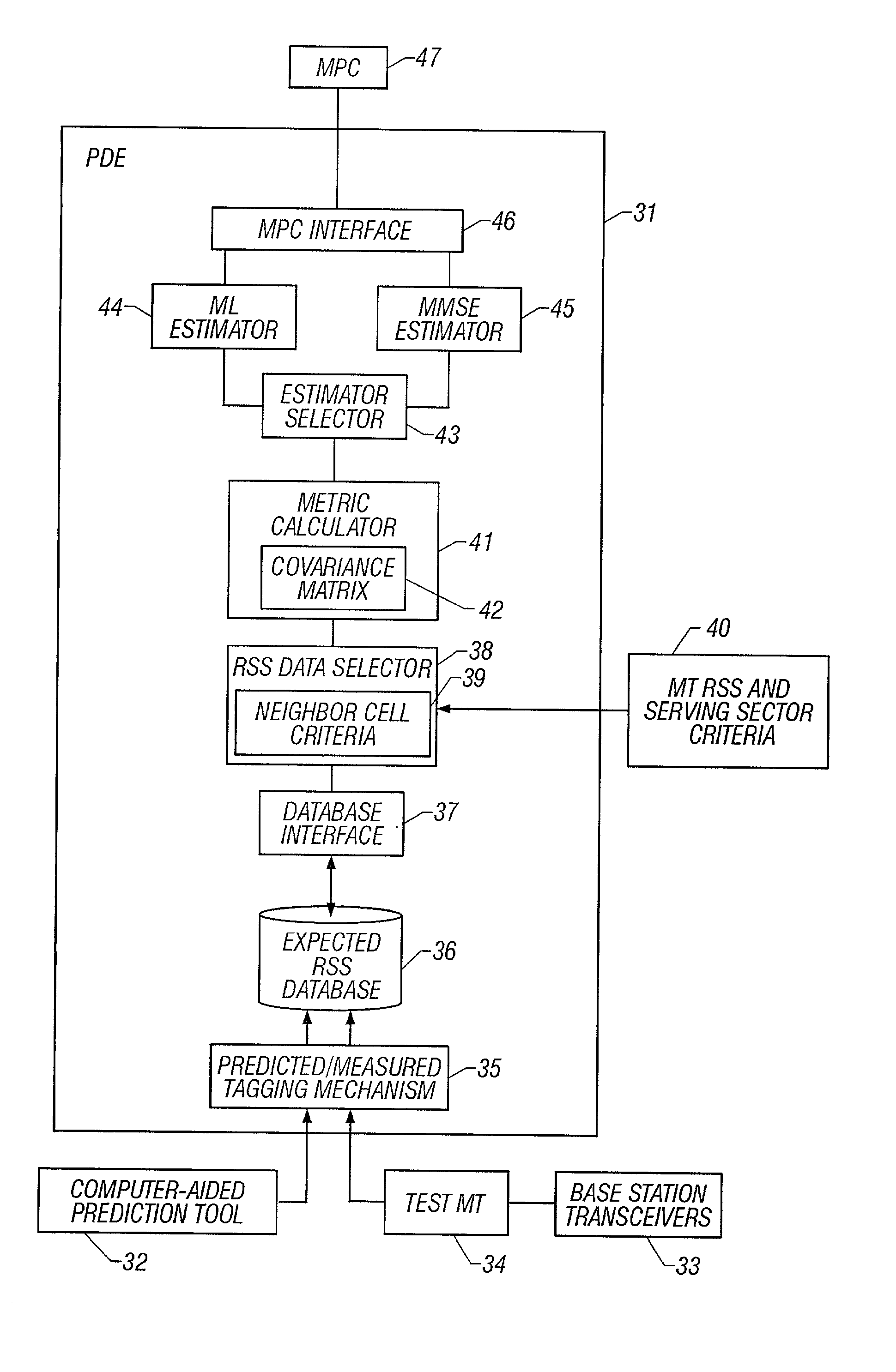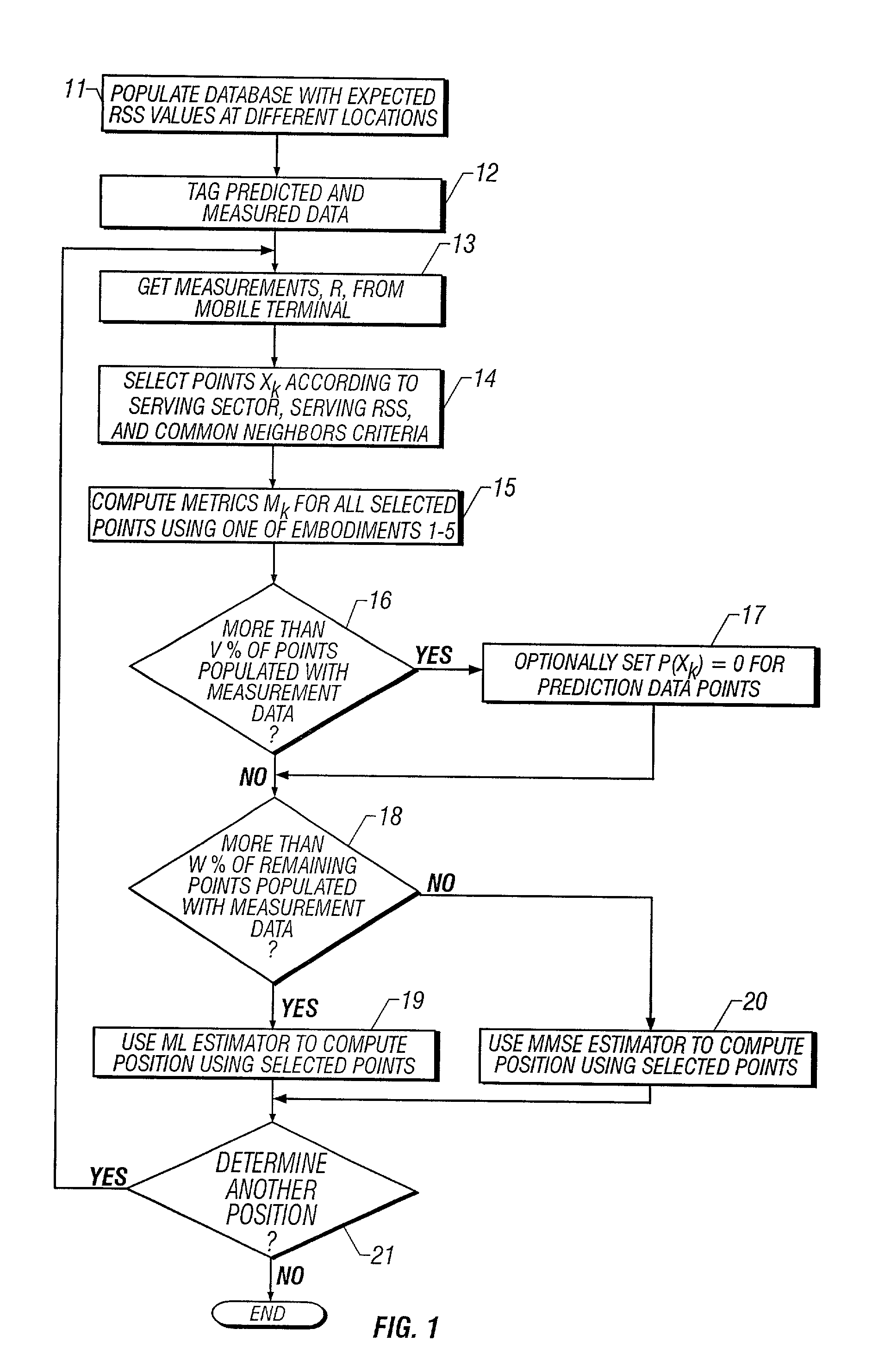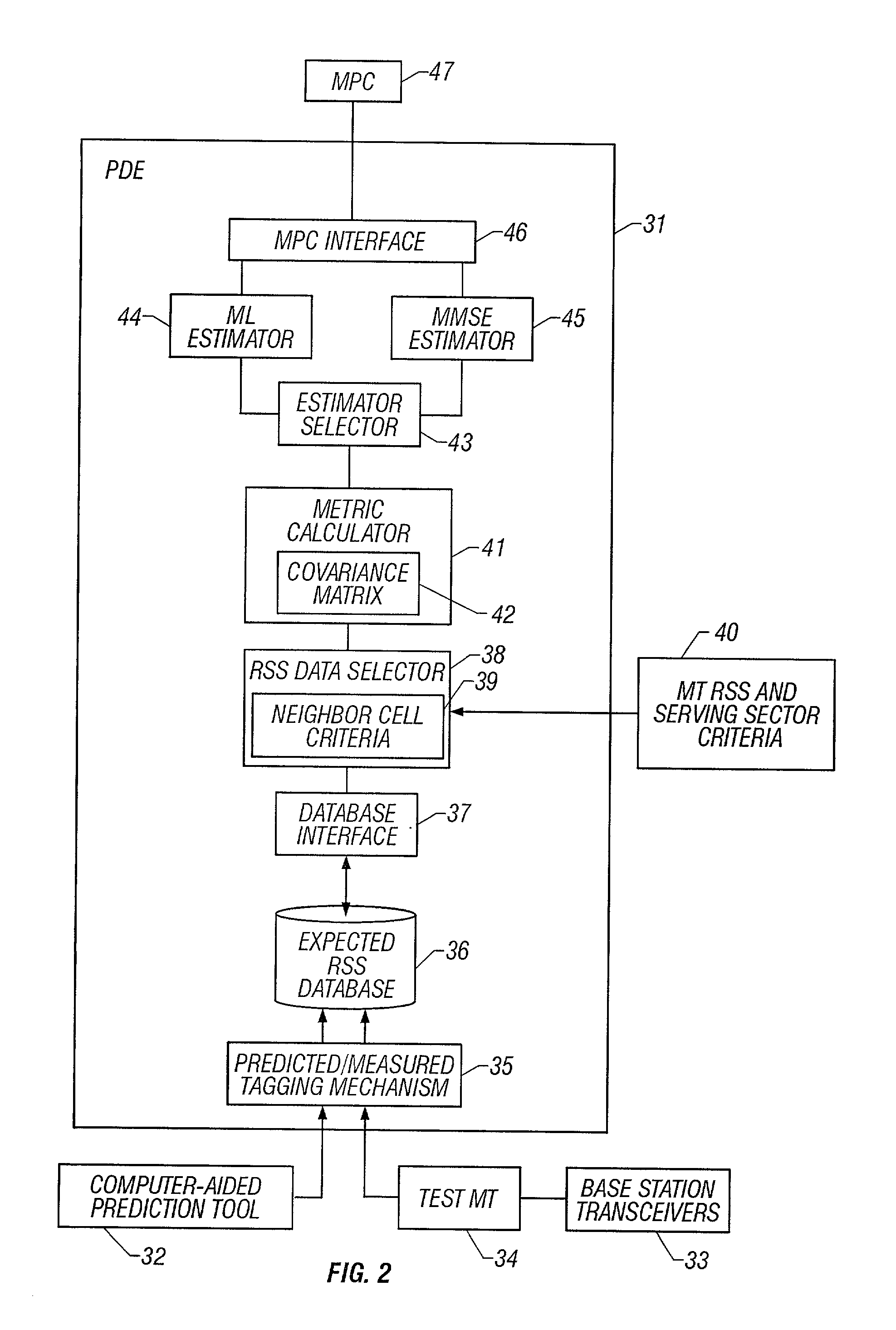System and method of estimating the position of a mobile terminal in a radio telecommunications network
a mobile terminal and radio telecommunications network technology, applied in the field of telecommunication systems, can solve the problems of large modification of mobile terminals, inconvenient closed-form mathematical expression of functions, and high cost and complexity of their implementation into the existing cellular network infrastructur
- Summary
- Abstract
- Description
- Claims
- Application Information
AI Technical Summary
Problems solved by technology
Method used
Image
Examples
first embodiment
[0035] In the present invention, a separate covariance matrix is stored for each database entry to compute the metrics for each of the locations in the database. When a metric has to be computed for a certain location, the covariance matrix for the corresponding entry is used by extracting the sub-matrix of the covariance matrix whose rows and columns correspond to the sectors that are common between the database entry and the sectors used for the measurement set, r. For example, if the stored covariance matrix is a 3.times.3 matrix for the sectors 1, 2 and 3, and the measurements were made on sectors 1 and 3, then, the sub-matrix contains the elements of the covariance matrix indexed by the pairs (1, 1), (3, 3), (1, 3) and (3, 1). This sub-matrix is then used in computing the value of p(r.vertline.x.sub.k) in order to compute the metric m.sub.k.
[0036] In a second embodiment of the present invention, two covariance matrices are stored for the whole database to compute the metrics fo...
third embodiment
[0037] In the present invention, the covariance matrix is assumed to be a diagonal matrix with different elements for each sector. If the non-diagonal elements, x.sub.ij, (i.noteq.j) of a square matrix are all zero, the matrix is a diagonal matrix. For example, the following matrix is a diagonal matrix: 2 E ( x x ) 0 0E ( y y )
[0038] As can be seen from this example, there is only the need to store as many elements as there are variables. Thus, the storage size for the covariance matrix is reduced significantly.
[0039] For the present invention, the variables are the errors in the RSS for each of the sectors. Hence, instead of storing a matrix, a single variance value may be stored per sector per location. Assuming, as in the first embodiment above, that the variance is location dependent, a single value is stored for the expected measurement variance of each sector at each location or entry in the database. For example, if there are 20 sectors in the whole system, and 100 locations ...
fifth embodiment
[0041] In the present invention, a single value is used for the variance of all sectors, i.e., it is assumed that the covariance matrix is diagonal with all elements of the diagonal being the same. However, it is assumed that the variance values are different for measurement data and prediction data. Hence, in this embodiment, only two values are stored for the measurement variance. One value is used when computing metrics for entries populated with actual measurement data, and the other value is used when computing metrics for entries populated with prediction data.
[0042] Dynamic Switching of Algorithms
[0043] The selection of the ML or MMSE algorithms may be dynamically switched based on the positions being considered. When the position for a mobile terminal has to be computed, a set of points is selected from the database. Metrics are then computed for these selected points. Then, an ML or an MMSE estimator or some other type of estimator is used to compute the position of the mob...
PUM
 Login to View More
Login to View More Abstract
Description
Claims
Application Information
 Login to View More
Login to View More - R&D
- Intellectual Property
- Life Sciences
- Materials
- Tech Scout
- Unparalleled Data Quality
- Higher Quality Content
- 60% Fewer Hallucinations
Browse by: Latest US Patents, China's latest patents, Technical Efficacy Thesaurus, Application Domain, Technology Topic, Popular Technical Reports.
© 2025 PatSnap. All rights reserved.Legal|Privacy policy|Modern Slavery Act Transparency Statement|Sitemap|About US| Contact US: help@patsnap.com



